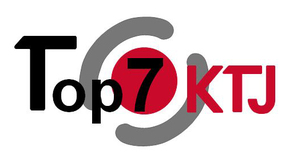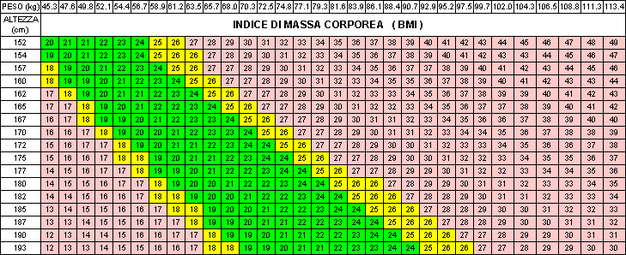software for Protected load work in motion programming
It is the "lower limb rehabilitation" of the TOP_WIN Software , which is realized for custom programming of training in motion in full compliance with laws that regulate physiological organic adaptation.
TOP7-KTJ is oriented to three main functions:
- the deambulation recovery
- the running recovery
- strengthening of lower limb muscles
Specially :
- Programs for the protected load deambulation recovery, have been developed trying to comply with the mechanical properties of cartilage , to restart that visco - elastic process which is the base of mechanical functionality.
For this each program indicates exactly
- deambulation speed to maintain (calculated according to the results on which was calculated the alternation cartilage liquid exudation/absorption during compression);
- distance to run ( calculated according to the numbers of phases load/recovery during which cartilage mechanical properties remain unchanged);
- the recovery periods to be made between series of work so that cartilage totaly rest and recover its characteristics of visco - elasticity.
Between the individual training sessions , TOP7.KTJ proposed a moderate increase in workload (understood as speed , distance , recovery time) so that there may be those summation effect which exploits that response very pronounced caused by the previous work session.
Program effectiveness is based on deambulation to specific speed mainteined for specific distance. So, it is very important strictly follow the set schedule evenwhen you feel
good and you are convinced "you can do more".
For this reason the "deambulatory recovery" programs must be conducted with the use of a tapis roullant , on which must be set the deambulatory distance and speed that is indicated by TOP7-KTJ.
So that informations are clearly visible to those who follow the rehabilitation protocol , TOP-7KTJ offers a function that displays on a computer monitor (which is located near by the tapis roullant) , the job to do so that the user can follow his self speed and distance changes programmed.
TOP7-KTJ is oriented to three main functions:
- the deambulation recovery
- the running recovery
- strengthening of lower limb muscles
Specially :
- Programs for the protected load deambulation recovery, have been developed trying to comply with the mechanical properties of cartilage , to restart that visco - elastic process which is the base of mechanical functionality.
For this each program indicates exactly
- deambulation speed to maintain (calculated according to the results on which was calculated the alternation cartilage liquid exudation/absorption during compression);
- distance to run ( calculated according to the numbers of phases load/recovery during which cartilage mechanical properties remain unchanged);
- the recovery periods to be made between series of work so that cartilage totaly rest and recover its characteristics of visco - elasticity.
Between the individual training sessions , TOP7.KTJ proposed a moderate increase in workload (understood as speed , distance , recovery time) so that there may be those summation effect which exploits that response very pronounced caused by the previous work session.
Program effectiveness is based on deambulation to specific speed mainteined for specific distance. So, it is very important strictly follow the set schedule evenwhen you feel
good and you are convinced "you can do more".
For this reason the "deambulatory recovery" programs must be conducted with the use of a tapis roullant , on which must be set the deambulatory distance and speed that is indicated by TOP7-KTJ.
So that informations are clearly visible to those who follow the rehabilitation protocol , TOP-7KTJ offers a function that displays on a computer monitor (which is located near by the tapis roullant) , the job to do so that the user can follow his self speed and distance changes programmed.
The main characteristic of TOP-KTJ Software, however, is the cyclic workload, specifically targeted to the adaptation of articular cartilage of the knee , which must take into account the anthropometric characteristics of the subject and in particular of the body weight that inevitably rests on the knee . More the subject is heavy , more the load should be initially reduced and distributed over time to avoid overloading of the articular structure.
To solve this problem , Top7-KTJ modulates the distribution in function of the Body Mass Index (BMI) : the more unfavorable is this index , the more diluited will be workloads over time.
With the same criteria were also set
- protected load programs for run recovery, for those who plan to resume sports / amateur activity after an injury or disease,
- protected load programs for strengthening of lower limb muscles.
They can be inserted at the end of medical treatment ( post - traumatic or physiotherapy resulting from surgery ) even if muscle stiffness , swelling , limited articular and pain persist , that may adversely affect the full resumption of normal work/professional activity.
To offer a program that may be more suitable to the actual physical conditions, each program has been structured in 5 phases that take into account the outcome of physiotherapy , but most of the articular type of problem that led to the immobility period and in particular to:
anterior cruciate ligament ACL,
posterior cruciate ligament PCL,
medial collateral ligament MCL,
lateral collateral ligament LCL,
inner meniscus,
external meniscus,
chondropathy
and problems associated.
The definition of disease is important to exclude in the work plan, exercises that may overload joints on the mend.
- protected load programs for run recovery, for those who plan to resume sports / amateur activity after an injury or disease,
- protected load programs for strengthening of lower limb muscles.
They can be inserted at the end of medical treatment ( post - traumatic or physiotherapy resulting from surgery ) even if muscle stiffness , swelling , limited articular and pain persist , that may adversely affect the full resumption of normal work/professional activity.
To offer a program that may be more suitable to the actual physical conditions, each program has been structured in 5 phases that take into account the outcome of physiotherapy , but most of the articular type of problem that led to the immobility period and in particular to:
anterior cruciate ligament ACL,
posterior cruciate ligament PCL,
medial collateral ligament MCL,
lateral collateral ligament LCL,
inner meniscus,
external meniscus,
chondropathy
and problems associated.
The definition of disease is important to exclude in the work plan, exercises that may overload joints on the mend.



